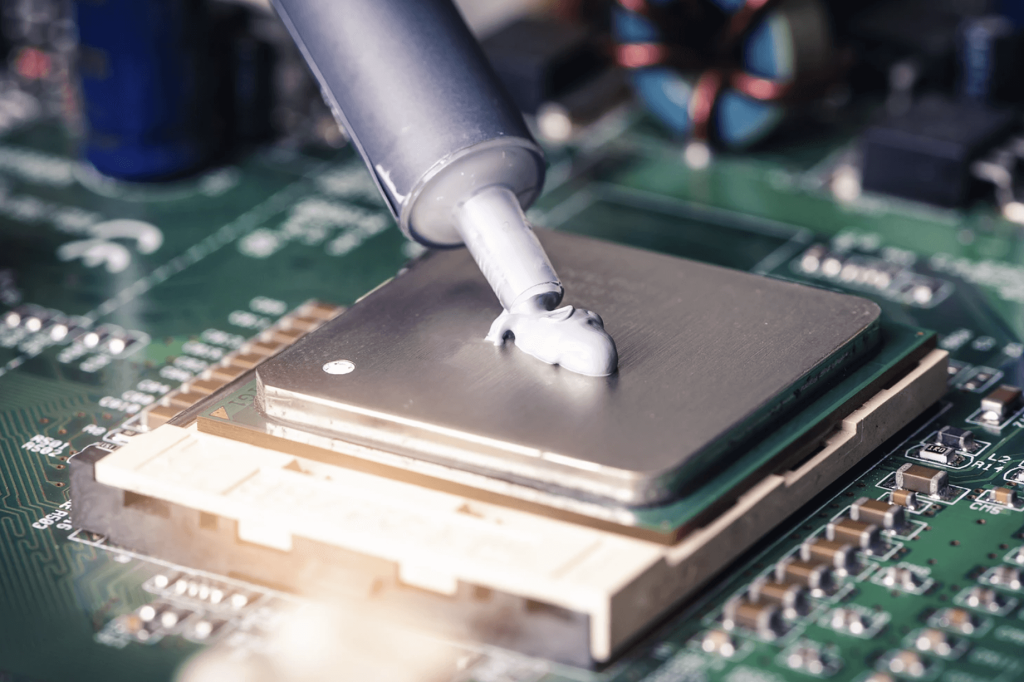What are the requirements for thermal interface materials in popular application areas?

In recent years, the explosion of photovoltaics, electric vehicles, 5G communications and mobile electronics has brought increasingly higher requirements for device heat dissipation. Thermal interface material is a typical thermal conductive material that can be widely coated on heating elements (power tubes, thyristors, electric heating piles, etc.) and radiators (heat sinks, heat sinks, etc.) in various electronic products, power batteries, and electrical equipment.
1. New energy power battery
As the main power source of new energy vehicles, power batteries need to arrange as many battery cells as possible in a certain space to increase their cruising range. This results in a very limited heat dissipation space in the power battery. When the vehicle is running, the heat generated by the battery cells Heat will gradually accumulate in a small heat dissipation space, which will reduce the charging and discharging efficiency of the battery and affect the power of the battery; in serious cases, it will cause thermal runaway and affect the safety and life of the system. Therefore, it is necessary to use thermally conductive potting glue with certain thermal conductivity to achieve potting between battery cells, as well as between the entire battery module group and the heat sink plate. Due to new energy power batteries, the optimal operating temperature range of power battery cells is very narrow, generally between 20-40°C and less than 65°C. To ensure the safety of vehicle operation and optimal battery performance, thermal conductive adhesive is generally required The thermal conductivity of the potting glue reaches more than 3W/(m·K).
2. Photovoltaic inverter
Generally speaking, the thermal conductivity of photovoltaic inverters is required to be no less than 2.0W/mK, and the withstand voltage is no less than 5kV/mm. At the same time, in order to protect the control circuit board and components from the influence of the external environment and mechanical forces, and protect the safety and stability of the circuit, the thermally conductive potting glue used in photovoltaic inverters is also required to have certain earthquake resistance, impact resistance, dust resistance, UV resistance, waterproof and moisture-proof, insulation and other properties. In addition, since the life of photovoltaic systems is generally about 20 years, the life requirements for thermal conductive adhesives used in photovoltaic inverters are also relatively high, usually more than 8 years.
3. 5G base station
The base station is a typical closed natural heat dissipation device. Its heat dissipation method is to allow the heat of the power device to be transferred to the casing first, and then conducted from the casing to the air. Considering the processing properties of electronic equipment in 5G base stations, dispensing technology is often used for construction to improve automation efficiency. Therefore, the thermally conductive adhesive needs to be prepared into a gel state with low stress and high compression modulus.
4. Chip packaging, heat dissipation
Thermal conductive silicone grease with good rheological properties is mainly used for filling between the chip and the packaging shell, and the packaging shell and the heat sink. Since the working temperature of the chip often reaches 60-70°C, the thermal conductivity material used at the chip has very high thermal conductivity requirements. High, it needs to be above 5 W·(m·K), and requires basic properties such as low adhesive layer thickness, high flexibility, high thermal conductivity, low contact thermal resistance, and appropriate thermal expansion coefficient.
The emergence of emerging application fields has put forward more diversified requirements for thermal interface materials, which are no longer limited to improving thermal conductivity, but are developing in the direction of multi-functionality, including dielectric, insulation, high-performance Reliability, flame retardancy and other aspects, so as to better adapt to the specific needs of various fields, thereby promoting technological progress and innovation in related industries.
